Attractive appearance, practicality, durability and safety - this is the main list of requirements that apply to a roof made of metal. And if the first three criteria depend solely on the correct choice of the type of roofing material, then the latter is provided by an additionally acquired snow retainer. True, subject to his correct choice and proper installation.
Content
Purpose of snow retention
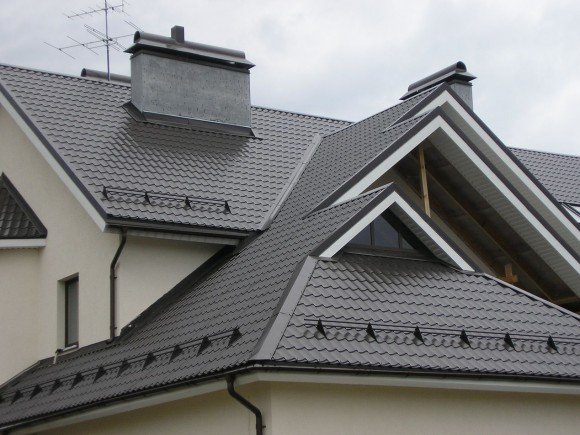
Snow retention systems are installed on the roof in order to prevent the accumulation of the entire mass of snow in one layer. Thanks to the special design, they break it into small parts. Some of them are evenly kept on the surface in order to melt during the thaw, others go down. But this happens quietly and does no harm. Along with this, they perform other functions:
- facilitate the process of snow removal from the roof;
- prevent clogging of drains;
- minimize the risk of damage to the facade of the building by falling snow or icicles;
- provide protection against falling metal roofing during roofing or in strong winds.
Types of structures for a roof made of metal
There are 5 types of snow retention systems:
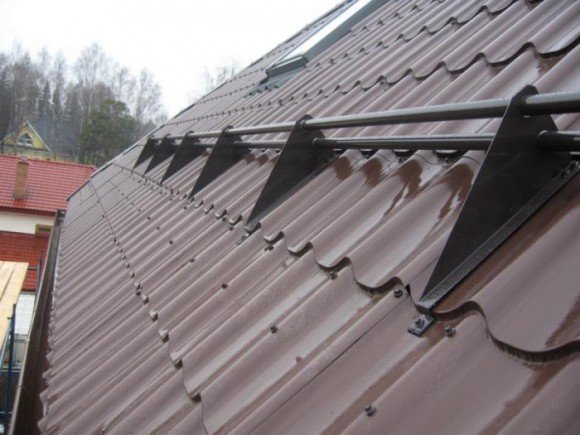
- Tubular - are a pipe that extends along the roof. Its diameter ranges from 10-15 mm.
Previously, tubular snow retainers were designed for seam roofs. Later they began to be installed on metal tiles, however, subject to certain installation rules.
- Lattice - widespread due to its effectiveness. They are conditionally divided into 2 types - ordinary and royal, which differ from each other in features of supports and options for execution. The advantage of such grilles is at a sufficiently high height, which can ensure safety both in winter and in summer. For example, when carrying out repair work on the roof, when it can delay fallen tools or even a person who has slipped.
It is better to install snow retention systems on your roof with the help of universal supports in order not to make a mistake with the choice.
- Decorated in the form of a snow-holding corner - it is characterized by simplicity of design and is made of sheet steel coated with a layer of polymer material. Its advantages - in the cheapness and variety of colors, which is achieved thanks to the polymer coating.
- Logs made in the form of a log are one of the first types of systems that were installed on Bavarian and Alpine houses. Nowadays, wooden logs have been replaced with metal pipes, the diameter of which is 140 mm. Supports for them are made of sheet steel. The advantage of such systems is their reliability, as they can withstand heavy loads.
- The yoke, or snow stopper, is just an additional element that performs a snow retention function. It can be installed with any of the above snow retention systems.Its disadvantage is its relatively low height, because of which it can only hold the lower ball of snow.
All snow retainers are classified according to the principle of action and are divided into barrier and passage. The first is a snow retention corner. The second includes tubes, grids, logs and a yoke. Throughput options are considered the most common, since they have the ability to hold a "snow cap" of great height.
Installation instructions
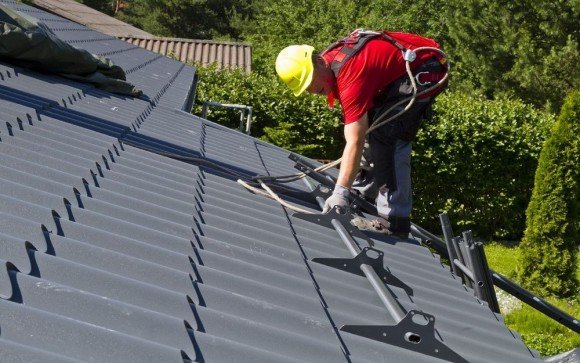
It is better to install snow retention systems at the time of roofing or repair work. Then you can arrange an additional crate specifically for them. All snow retainers are attached equally, although the rules must be followed when working with each of them. When installing, it is advisable to use the maximum number of mounts in order to ensure proper security.
Once a year, it is necessary to check the fastenings and structures for strength in order to exclude the occurrence of any unpleasant situations.
There is a universal rule for choosing the number of snow retention. On a roof with a slope angle of more than 45 degrees, you will need 1 structure for every 6 square meters. On the roof with an angle less than 45 degrees - 1 construction for every 8-10 m2.
Principles of installing tubular snow retention systems
- They are fixed strictly at the junction of the bearing wall and the roof.
- You can not attach them to the eaves overhang, as this will lead to the collapse of the structure.
- If the length of the roof exceeds 5 m, it is necessary to install snow retainers in several rows, keeping a distance of 2.5 - 3.5 m between them.
- If the house has an attic, it is better to install a snow retention system above its windows.
- The structure is fixed at a distance of 40 - 50 cm from the edge of the roof, that is, at the level of 3-4 tiles.
- There are two ways to install it: butt to back to back or in a checkerboard pattern. The second method is preferable, as it contributes to the uniform removal of the snow cap on the entire roof area.
- To ensure tightness during installation will help rubber washers, which are placed between the plane of the system and the roof.
- For ease of installation under the crest of the wave, wooden blocks are laid in the attachment points.
Basics of installing lattice snow retention systems

- It is better to fix them around the entire perimeter of the roof.
- In order for such a snow retainer to be able to support the weight of an adult and be used as a protective structure, he needs to provide reinforced fasteners to the rafters.
Principles of working with elements in the form of corners

They are installed on soft roofs, roofs with a small area and the existing angle of inclination. Systems are especially effective in cases where it is necessary to ensure that the snow cap is kept in a certain area of the roof. Often they come with ready-made mounts.
- Carrying out the installation, it is necessary to bring the horizontal step of the snow retainer over the edge of the metal tile and fix it with screws. You can replace them with self-tapping screws, making sure that they do not violate the tightness of the waterproofing layer. In other words, were no more than 5 cm long.
- Tightness of the node will provide elastic gaskets.
- It is not recommended to make slots or additional holes in the system to reduce the load. It is better to purchase special corners equipped with additional stiffening ribs located between the planes.
The nuances of log systems
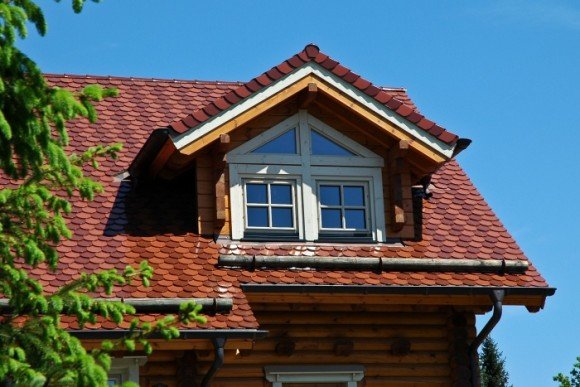
Mounts for such structures are selected in accordance with the area of the roof and the shape of the base, which should correspond to the distance between the waves of the metal tile. They are installed using self-tapping screws.
Features of installation of yokes
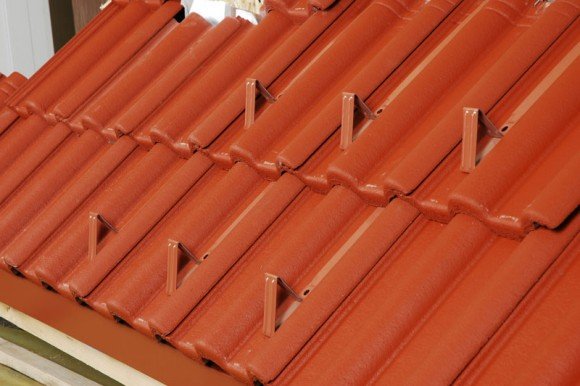
They are mounted on the roof with a large slope at a distance of 0.8 m from each other using self-tapping screws and a sealing gasket. Due to the fact that there are several models of such snow-stoppers, you need to choose them based on the area of the roof and the shape of the base. The latter should correspond to the distance between the waves of the metal tile.
Snow retainers are universal designs that preserve the safety of people living in the building or passing by it daily, and at the same time do not spoil the appearance. Their additional advantages are minimal cost and ease of installation.

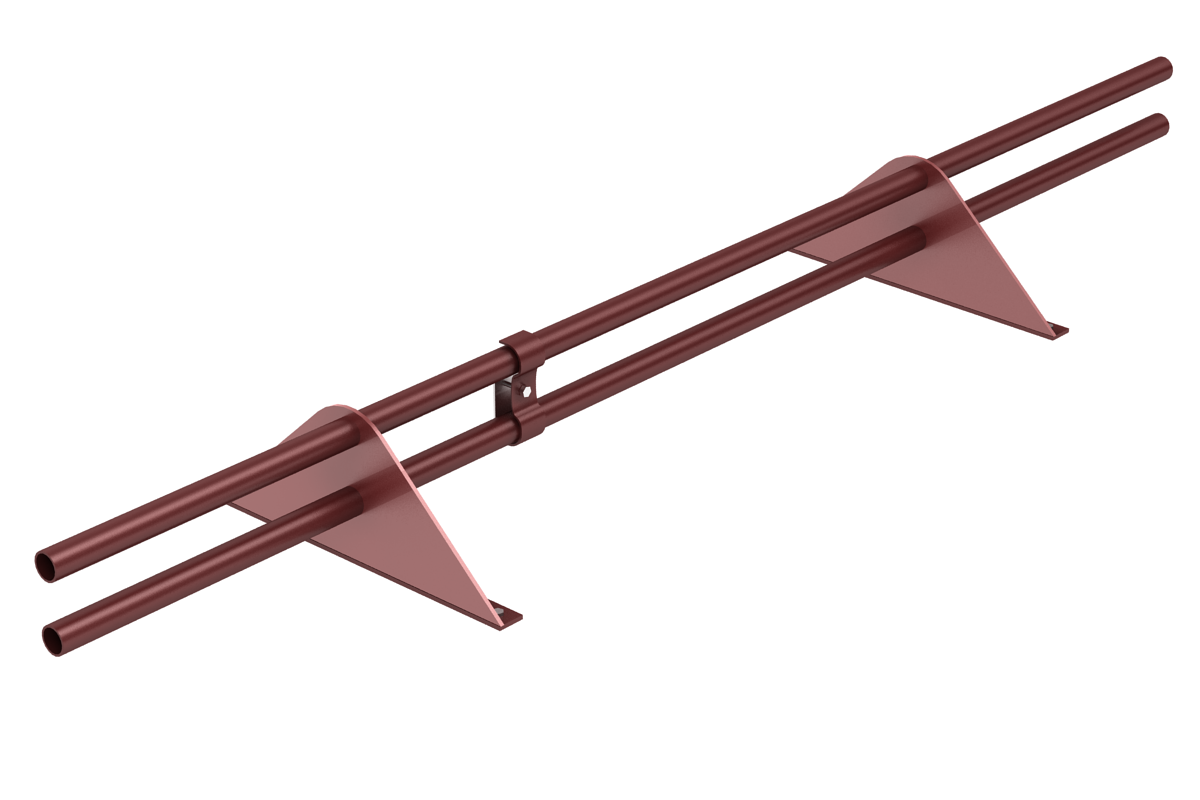



Alas, no comments yet. Be the first!